Chapter 17
User Experience Specialists
User experience (UX) is today something of a buzzword. Those involved in this relatively new practice are not “touchy-feely” but aspire to make it an exacting discipline based on research and data analysis. Universally recognized as part of “best practice” standards, UX is the study of how to enhance customer satisfaction and loyalty.
Paradoxically, putting the user first is a new idea. For decades, graphic designers were focused on delivering their client's message in the most efficient and persuasive manner, forgetting the consumers in the process. Nowadays, thanks to the fluidity of the digital language, the communication between a brand and its audience is a two-way street. In fact, innovations are often customer driven: the way people experience a product or a service is very much part of the brand equation.
Designers who make a profession of UX are the first to admit that it is still an amorphous, multidisciplinary concept, incorporating aspects of psychology, sociology, ergonomics, and computer science, just to name a few complementary disciplines. In other words, user experience designers are not specialists but polymaths. They are the Renaissance men (and women) of the digital age. As such, they find their place in software development, but also in fields where fast-paced technological advances threaten the user's sovereignty.
Bruce Charonnat
Understanding Human–Computer Interaction
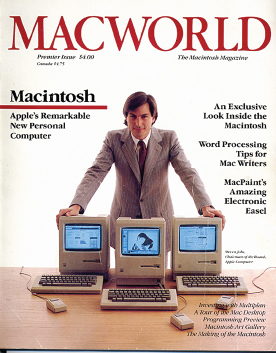
Premier Issue of MacWorld
Art Director: Bruce Charonnat
1984
Can you tell us what the relationship is between graphic design and experience design—as practiced today?
I see user experience as a much broader term than graphic design. Its roots go deep into the history of communication, human-computer interactions, imagery, and technology. In our work now at Tangible UX, user experience design requires such diverse resources as the researcher with a PhD in cognitive psychology, the library scientist, the interaction designer, the visual artist, the engineer, the analyst, the marketer, and many others.
When it comes to developing user experiences, is there a difference between “designing” and “engineering”?
Absolutely. To the same degree as there is a difference between the architect of a house and its builder. Of course, collaboration between design and engineering is critical to the success of any user experience. And in order to be a successful user experience designer, one must be aware and up to date with engineering trends. But, ultimately, the designer and the engineer have different responsibilities. These two skill sets are not mutually exclusive, of course, and many people today are fluent in both. I see more and more of that with younger designers, and less so with the designers from an earlier generation who migrated out of the world of print.
Successful interactive devices today always have a strong social network component. How come community building is such an important part of “interaction design”?
I would say that community building is an important part of the world of mobile design—that is, design for smartphones, tablets, and so on. Interaction design is a process that is equally applicable for social and nonsocial experiences. As an example, designing Pinterest and designing Microsoft Excel are both exercises in interaction design. But one has a much more dominant social network component than the other. While I would say that “social apps” are becoming more and more dominant in our daily lives, they do not obviate (yet!) the need to design products with less of a social component.
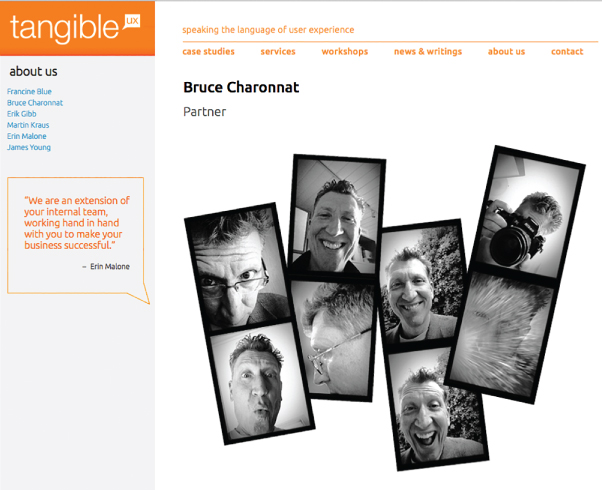
The User Experience on Tangible Website
Art Director: Bruce Charonnat
2014
Tangible UX helps clients gain strong user acceptance of their products. Is it a well-known fact in the industry that users have trouble “embracing” the functionalities of interactive devices?
What users have trouble “embracing” are poorly designed products and experiences! As well they should. Embracing a well-designed product or experience should be fairly effortless. I have heard stories of children aged 1 to 2 that can call their parents on a smartphone.
Do designers today have to acquire a solid knowledge of programming to be able to develop more “user- friendly” experiences and interfaces?
I would not say that programming skills are required as much as they are extremely advantageous to the user experience designer. Some people who gravitate to user experience design have more of a combination left-brain/right-brain fluency. As I mentioned before, knowledge of engineering trends and solutions, and the ability to speak to that world, are more critical to the designer than the actual ability to code.
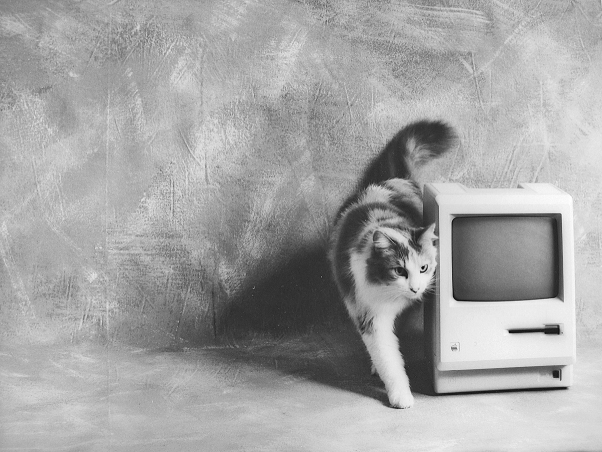
User-Friendly Macintosh in MacWorld
Art Director: Bruce Charonnat
Michael Aidan
Using the Audience as Media
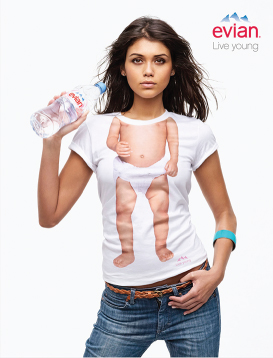
Evian Live Young
Print Campaign
2013
Can you tell us what evolution in mind-set you've witnessed in the last 20 years?
The most striking change is cultural, not technological! The digital age has completely transformed the relationship between people and companies. Dialogue has replaced one-way street communication. Captive audiences are a thing of the past. So are techniques of persuasion. Brands today are seeking engagement with users. At Danone, this new mindset forces us to rethink the way we approach marketing. We focus on storytelling—and high-quality content is the key.
Even innovations have changed: Whereas in the past they came from companies with money to invest in R&D, today they come from customers, individuals who are often more technologically savvy than the marketers themselves. As a result, instead of trying to be “on message,” brand managers are now focusing on the user experience. More power to the people!
Do you know that today, according to the latest polls, only 16 percent of the brands out there are considered truly relevant by most people? In other words, over three quarters of the existing brands are in a take-it-or-leave-it limbo.
Specifically, what is your role at Danone today?
I am in charge of accelerating the digital revolution! This means working on the tools, the technology but, more importantly, the mindset and the contents. The marketing culture needs to adjust to all the changes we mentioned before. I'd like to develop tools and provide sources of inspiration so that we can progressively switch to a more intuitive connection with consumers. Linear thinking doesn't produce results anymore. We need to work the way start-ups do: take risks, stay agile, dare to do the things that have yet to best tested.
Evian has been successful at this. In 2009, we launched the “Roller Babies” campaign on YouTube. It went viral immediately. We got 2 million clicks in three days. It was one of the first YouTube-exclusive campaigns by a major brand, with now over 200 million total views—the Guinness World Record for the most viral video advertisement of all time. The heart of this campaign was on the Web, not on TV. And it was a first for us.
In 2013, still on a roll, so to speak, we followed up with the “Baby & Me” campaign. We also developed a Baby & Me app for Facebook, Android, and iPhone. Right from the start, we got 1000 downloads a minute. Our servers kept crashing. A nightmare, but also a marketer's dream: people willing to be part of your brand story.

How do you define your philosophy in terms of brand strategy?
I like to think of myself—and all marketers—as storytellers. This is neither science nor art. We need to tell a story that generates enthusiasm for our brand and surround ourselves with the best talents to make it happen; that is to say, create the “chapters”: advertising, packaging, innovations, promotions, or services.
How does one develop the “digital language” of a specific brand?
The digital language is not the language of “persuasion” but the language of emotions. Your job as a marketer is to generate enthusiasm for your brand. How do you do that? First, you tell a story about the brand. Then you invite the public to enter into the narrative, to interact with it, to become “engaged” with it—digitally, of course—in a way that was not conceivable 20, 10, or even 5 years ago.

Evian Baby and Me
Mobile App
2014
So, the very concept of interactivity is being redefined as we speak?
Yes, you have to inverse the traditional relationship with your audience. The way consumers experience a brand is the brand. And that brand is “relevant” only if it provides a way for people to engage with friends, colleagues, and loved ones. And to do that, you have to be entertaining, upbeat, amusing. You can't be didactic. You don't sell a product, a service, or a lifestyle anymore: You provide a delivery system for emotions.
Can you train marketers to think “digitally”?
The best way to think digitally is to communicate digitally. We have developed an in-house app—Danone iBrand—to encourage our staff to look around, to be inspired by other marketers do, to learn from each other, to see what works and doesn't work, and to share ideas and information. Instead of being trained, our marketers will train themselves. Using the app across the board will provide the common experience we need to understand the new paradigm. To survive, brands must learn to navigate the digital flow.
Hugh Dubberly
Mapping the Relationship between Ideas
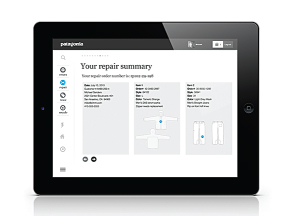
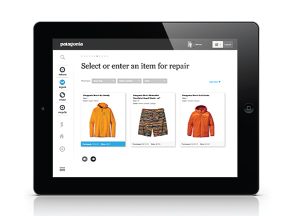
iPad Repair App
Design: Michael Gallagher and Jane Brown
Creative Direction: Robin Bahr
2013
You've been in the design business for many years, specializing in design services. What are the key changes or shifts you've seen in graphic design over the years?
I graduated from college in 1983, a year before Apple introduced Macintosh. A couple of years later, I joined Apple, and about 10 years later, I joined Netscape, when it was still a start-up. I was lucky to “grow- up” professionally as the technology matured. This process involved several large shifts:
- From “pasting-up” “mechanical art boards” (my first job at a design firm the summer after high school was doing pasteup) to using computer-based phototypesetters and then laser printers. (In a summer job at Xerox during grad school, I developed font specimen sheets for Helvetica 300, the first laser version of Helvetica.) Ten years after the Mac intro, most printed material was being prepared entirely on Macs.
- From print to online communications. Corporations used to spend hundreds of thousands of dollars each year to produce glossy annual reports, in addition to brochures and other printed “collateral.” In 1987, Apple released HyperCard, and we created the first interactive annual report, sending a floppy disk along with each printed report. A few years later, my team produced an online annual report to accompany Netscape's printed report. Today, financial information is available online, and glossy printed annual reports are a thing of the past. When I worked for Apple, the San Francisco Bay Area had four world-class printers; today, it has none.
- From communicating about products to designing communications products. Graphic designers used to work primarily for folks in marketing communications, who worked for folks in marketing, who served engineers, who ran the company. Today, many graphic designers work directly on products and report to product managers. In addition to helping the people who create communications about products, designers are now just as likely to be creating the actual products.
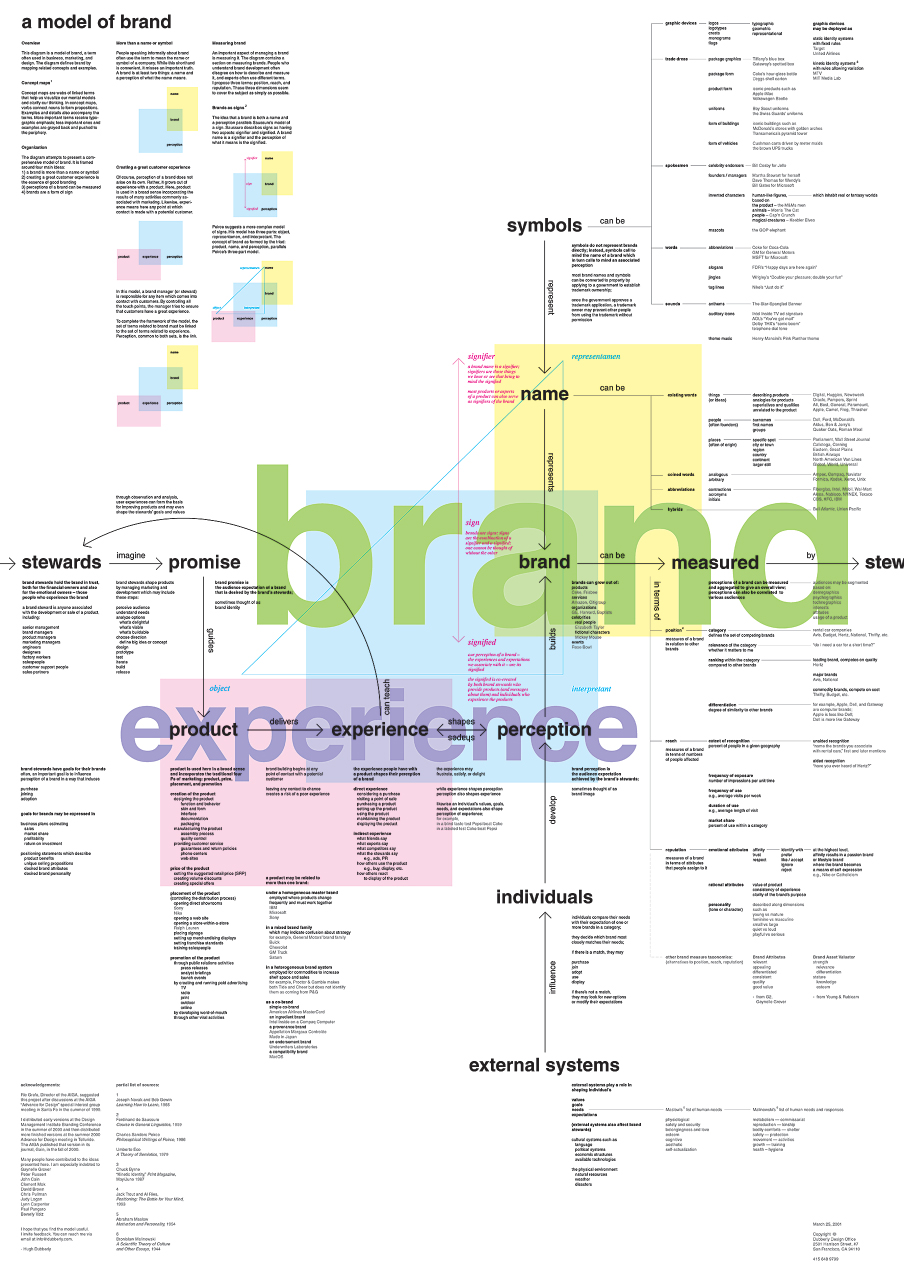
The term “service design” is emerging of late. What is the methodology and goal of this?
As design emerged from craft during the nineteenth century and through much of the twentieth century, designers focused on the form of objects. Good designers have always had a broader view, and design managers often have had to consider not only form but also meaning, structure, and context. HfG Ulm introduced the concept of “environmental design” (meaning the design of everything), and the Dutch firm Total Design and the U.S. firm Unimark also promoted a holistic approach. These were early precursors to the idea that a brand experience is built through a series of “touch points,” which form a customer journey. Of course, the journey can be planned or to some extent designed. Thus, interaction at a series of touch points along a customer journey may be thought of as service design—or design for service. Service design also recognizes a shift in our economy from a manufacturing basis to an information and service basis.
Today, hardware products, such as iPod or iPhone or Kindle, exist largely as windows into services. So, the focus of design has expanded from the form of objects to the behavior of systems. The introduction of the term “service design” acknowledges this shift, and organizations like the Service Design Network seek to build knowledge about service design and help designers improve in this area.
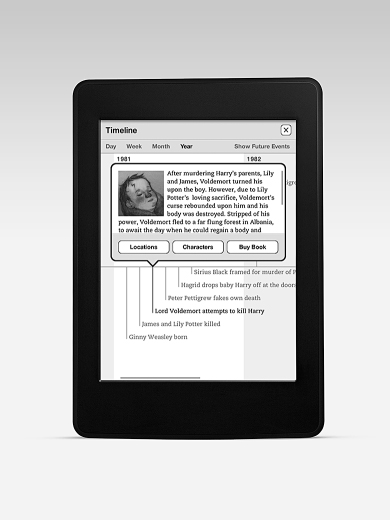
Fisheye Browser
Design: Ryan Reposar
Creative Direction: Hugh Dubberly
2012
Concept maps may have been part of the design toolkit in the past, but it is another emerging component and central to your work. What is it and its relationship to design?
Concept maps are tools for organizing ideas. They “map” relationships between ideas. At the simplest level, concept maps are node-and-link diagrams, where the nodes are nouns and the links are verbs. In English, node-link-node forms a sentence—subject-predicate-object. Concept maps are similar to mind maps, except that the links have labels. A concept map is also very like an outline, except that many branches or leaves at the edge of the outline are connected.
Since much of our work deals with software (which is intangible) or services (which unfold over time), we need ways to understand existing systems, confirm our understanding of others, and create and share prototypes. That means we need tools for modeling systems, which is one of the main ways we use concept maps.
Your firm creates products. Among them is one of my favorites (because it works), the Alere Diet Tracker. How was this developed in your hothouse?
Design proceeds through iteration. The Alere Diet Tracker was no exception. We had designed a couple of diet applications earlier. One version was for use in a blood glucose meter. It included a database of more than 500 food-calorie pairs, cross-referenced in a complex hierarchy. It also enabled users to perform calculations based on calories eaten and blood sugar level to determine suggested insulin doses. Needless to say, it was complicated—and thus cumbersome to use. Still another diet app we developed used calories, food type, and amount of exercise to suggest meal combinations that would help users reach weight goals. Again, a complex product concept.
We also surveyed existing diet apps—Apple's app store offers more than 100. Most of them are complex, in part because food is complex (official food classification schemes list seven or more dimensions); metabolism is also complex (the body resists losing weight as a defense mechanism); and unlike hardware, complex software costs no more to manufacture than simple software—in fact, more features can be a selling point. All these things lead to complex diet apps. From our frustration with this complexity, we asked, “What's the simplest possible diet app?” That led to a challenge: “Could we design a diet app that is essentially one screen?” That became the product concept and the basis for the design.
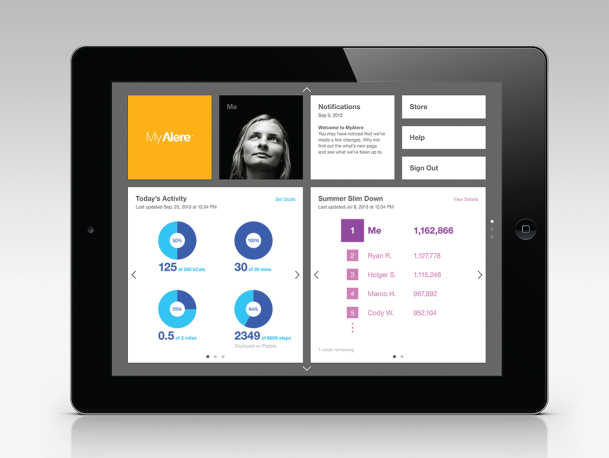
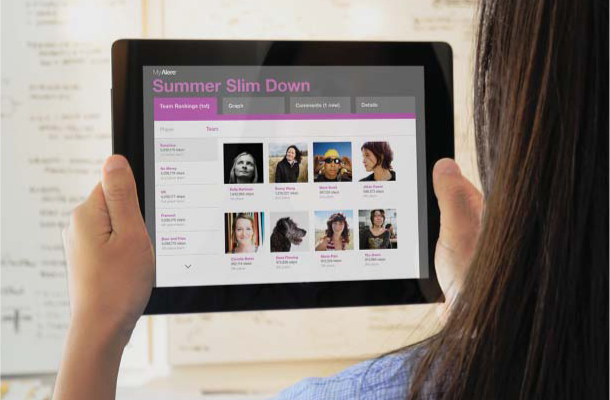
MyAlere iPad Diet Tracker
Design: Ryan Reposar
Creative Direction: Hugh Dubberly
2013
I am very impressed by a project you conceived to show National Geographic how to refocus its energies. Is the role of the designer now to be a strategist?
Steve Jobs said it well: “In most people's vocabularies, design means veneer. It's interior decorating. It's the fabric of the curtains and the sofa. But to me, nothing could be further from the meaning of design. Design is the fundamental soul of a man-made creation that ends up expressing itself in successive outer layers of the product or service.” Of course, designers can practice quite usefully at any of these “layers.” It's fine to practice at the layer of form. It's also true that the inner layers, at least to some extent, constrain the outer layers.
An interest in form leads naturally to an interest in meaning, structure, and context—to understanding related systems and the ecology in which a product or service will operate—to wanting to influence the success of the product or service in the broadest possible way. That leads naturally to discussions of the organization of the product team, the team's process, larger product development processes, and then to the organization's larger structure, processes, goals, and, ultimately, to how the organization fits with and adapts to its environment. All these things are design questions, and discussing the answers benefits from design thinking, prototyping, and the involvement of designers.
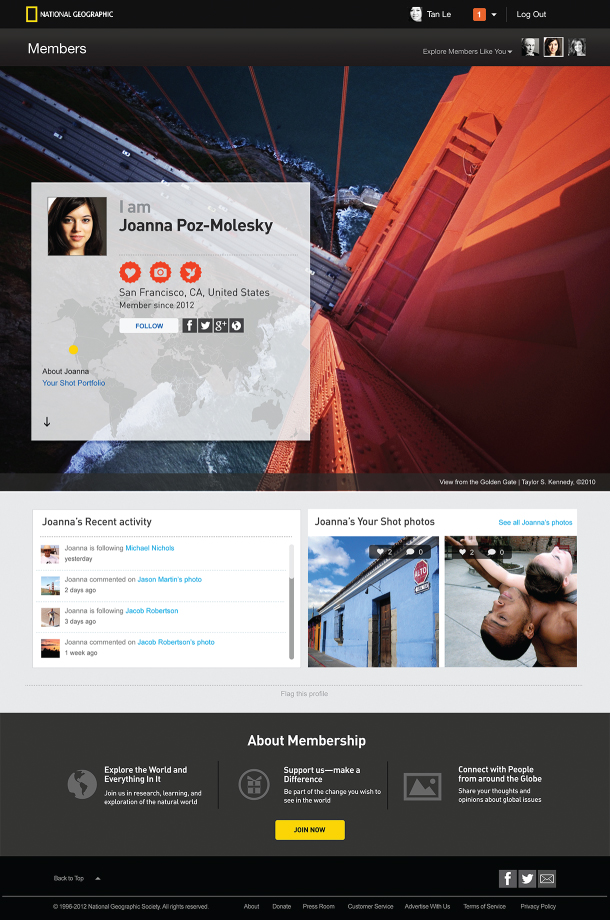
National Geographic Member Center
Design: Michael Gallagher and Jane Brown
Creative Direction: Robin Bahr
2012
The skills needed for strategic and systems thinking are different than those for pushing type around. How are these skills imparted to your employees?
Typography remains vital for design, in part because so much of the product of design involves type (even in architecture and industrial design) but also because design is a conversation, involving teams, which benefits from shared models, which inevitably require typography. Typography, well taught, includes a kind of systems thinking—rules-based systems, such as style sheets (CSS), proportion, grids, and signage systems. So, there's already a basis for systems thinking in typography.
However, other disciplines have developed approaches to systems, which should be part of design education, for example,
Formal Systems: information structures and network topologies
Dynamic Systems: stocks + flows, resource cycles, lags + oscillations, explosion + collapse, dynamic equilibrium + homeostasis
Control Systems: feedback + stability, goal-action-measure loops, requisite variety
Living Systems: self-organizing, dissipative systems, autopoiesis, positive deviants, coevolution + drift, biocost
Conversation Systems: observing-understanding-agreeing, learning-coordinating-collaborating, goal-task ladders, bootstrapping, ethics+responsibility
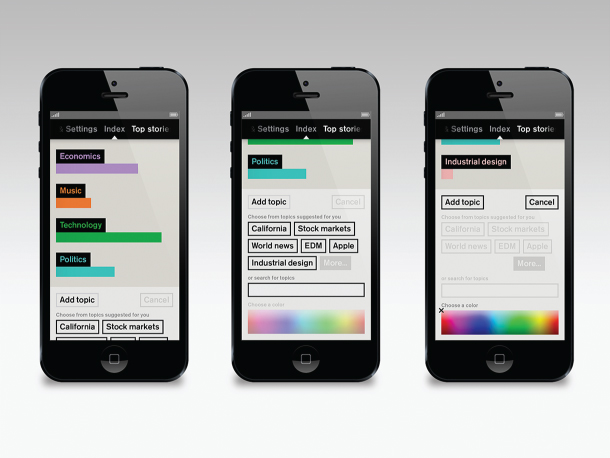
Zite News Reader
2013
What do you look for when hiring for DDO?
We like to hire people who are curious—people who are not only interested in learning but also taking an active role in their own learning. Ideally, a designer would have great formal skills, deep experience with the patterns of interaction, basic coding skills, writing and presentation skills, and experience in product management.
Not only are physical products being integrated into systems; so, too, are online products and services.
The simple act of connecting products changes their very nature. Apple's iPod is more than a music player. Amazon's Kindle is more than an e-book reader. They are integrated systems of hardware, Web-based applications, and human services. Facebook is more than an online social network. Google is more than an Internet search engine. They are product-service ecologies—networked platforms creating opportunities for organic growth.
The networked platform revolution requires us to rethink our assumptions about products—and about design. We must think about integrated systems in new ways, define new ways to measure their progress, and organize new development and design processes.
Matthew Stadler
To Publish: To Create a Public for Books
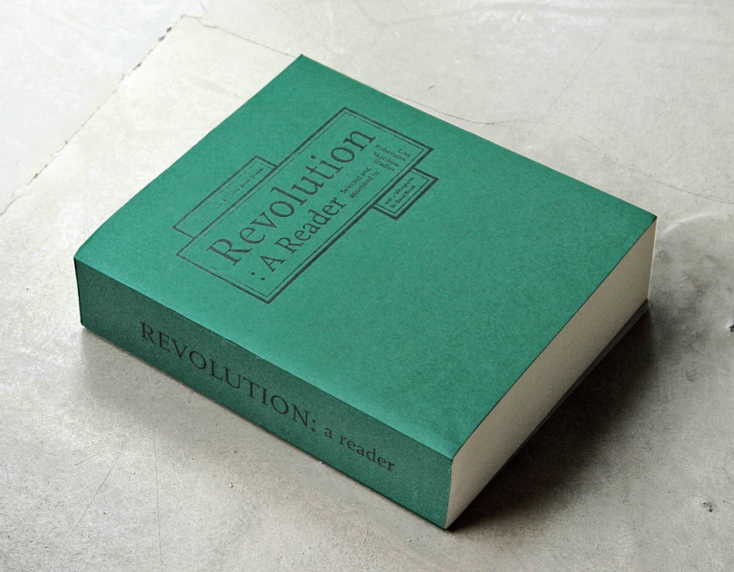
Revolution: A Reader
by Lisa Robertson and Matthew Stadler
2013
In an interview, you once said that selling books on demand was like selling loaves of bread in a bakery. Is it possible to make a living by selling books on such a small scale?
The idea was that book production should be tied more tightly to interest in the book, like the daily provision of bread from a bakery. New efficiencies in digital and handmade production made it possible to do so and still sell books at a competitive price. The most important recent change then was the availability of cheap, perfect-binding machinery. Cheap, but high-quality, digital printing had already been around for awhile. And there was a lot of great, unpublished literature already available.
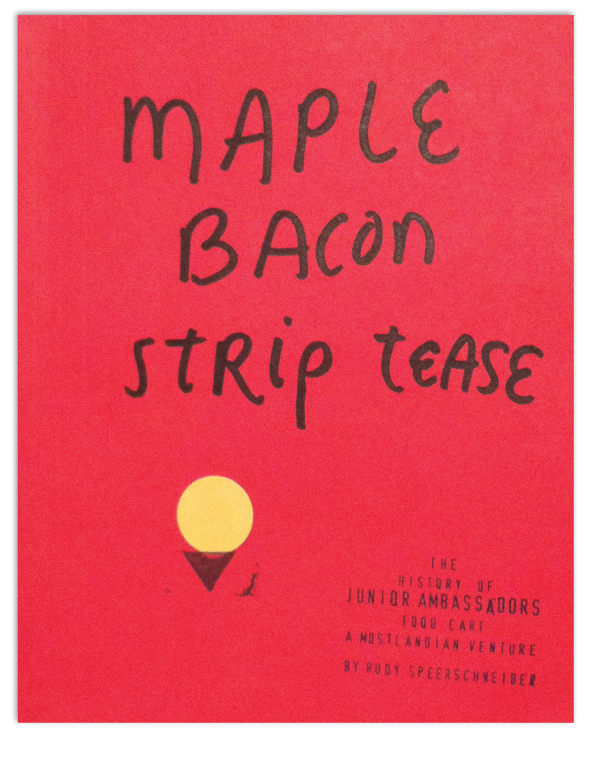
Maple Bacon Strip Tease
by Rudy Speerschneider
2009
You bought a small digital printer, a hand-operated book-binding machine, and went into business with practically no experience and no investors—yet you made it work. What was your most important asset?
The most helpful thing was our poverty. We had to sell books or stop making them. That motivated us to insist that our work was valuable, should be paid for, and not to tolerate the “everything should be free” ethos of many progressive cultural experiments. All work should be paid for. If more people would stick to this radical stance, I think we would have a healthier culture and economy.
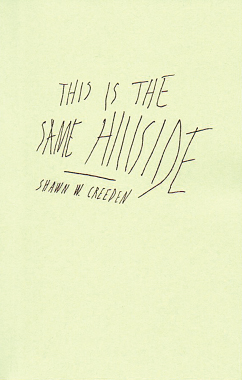
This is The Same Hillside
by Shawn W. Creeden
2011
How did you choose which book to publish?
We (Patricia No and I) published any book we thought was great. Since we made them one at a time and were obliged to sell whatever we made, it was important to only publish books we thought were great. There were many of them.
The first print-on-demand book I published was one year before Patricia and I opened PS. It was a reader I had edited and annotated called Where We Live Now. That fall I gave a talk in Vitoria, Spain. I spoke about “the social life of the book” and about the logic and the meaning of the word publication, which I described as “the creation of a public.” It's then and there that I figured out what I would do next. I would create a public for the books I would publish. This idea became the central focus of Publication Studio.
Do you agree with French author Charles Nodier, who said: “Only second to the pleasure of owning books is the sweet satisfaction of talking about them”?
Yes, we used any means possible to host and enrich the social life of our books!
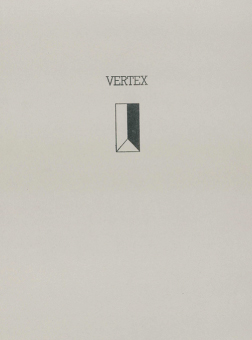
Vertex
by Tim Roth
2013
What is the most compelling reason to buy a book, in your opinion?
Because you want to read it.
For the most part, the books you published were not by well-known authors, had not received reviews, were printed digitally, and didn't have illustrated covers. Why were people willing to pay $20 of them?
I'm not sure why anyone buys books. Each time I was party to such an exchange, it seemed obvious to me that the work involved—the writing, the book production, the social interaction of selling—were quite obviously (to everyone) worth well more than the price paid. If you think about the sorts of things we routinely pay 20 euros or 30 or 50 euros for (music, food, a night out, clothes), it isn't surprising to find that a great book is among them.
You rubber-stamped the titles of your books on ordinary stock from recycled file folders. Yet the result was oddly beautiful! What inspired your aesthetic choices?
Again, our poverty. The best choices we made, aesthetically, were all the product of trying to articulate, rather than obscure, our poverty and our passions.
Did you design the inside of your books as well, or did authors give you print-ready files?
For the most part, we designed the books, inside and out. Later, as we began to work with more visual artists, they took on the task of designing the insides of the books and sometimes also the covers. As a general rule, books of literature published by PS are usually designed by PS, and books by artists are usually designed by the artists or by book designers they or we choose to work with.
Can you explain why promoting a book to the right audience can be assimilated to “a political act”?
No. But I think every economic interaction is already political. So it makes sense to me that anyone trying to sell books in the market is already engaged in a political campaign, of sorts.
Would you recommend book publishing as a venture for people who want to try to live creatively outside the conflict of art versus commerce?
I don't understand the dichotomy. I suggest you publish books if there are books that do not have publics but you believe they should have.
You left Publication Studio. What is your next project?
I left a long time ago, because I am a writer first, a publisher second. I was interested in helping conceive and activate this infrastructure so that I, as a writer, could benefit from it. That has been my work for about three years now—just writing, and getting to use PS for publication where it fits, as the correct tool for me.
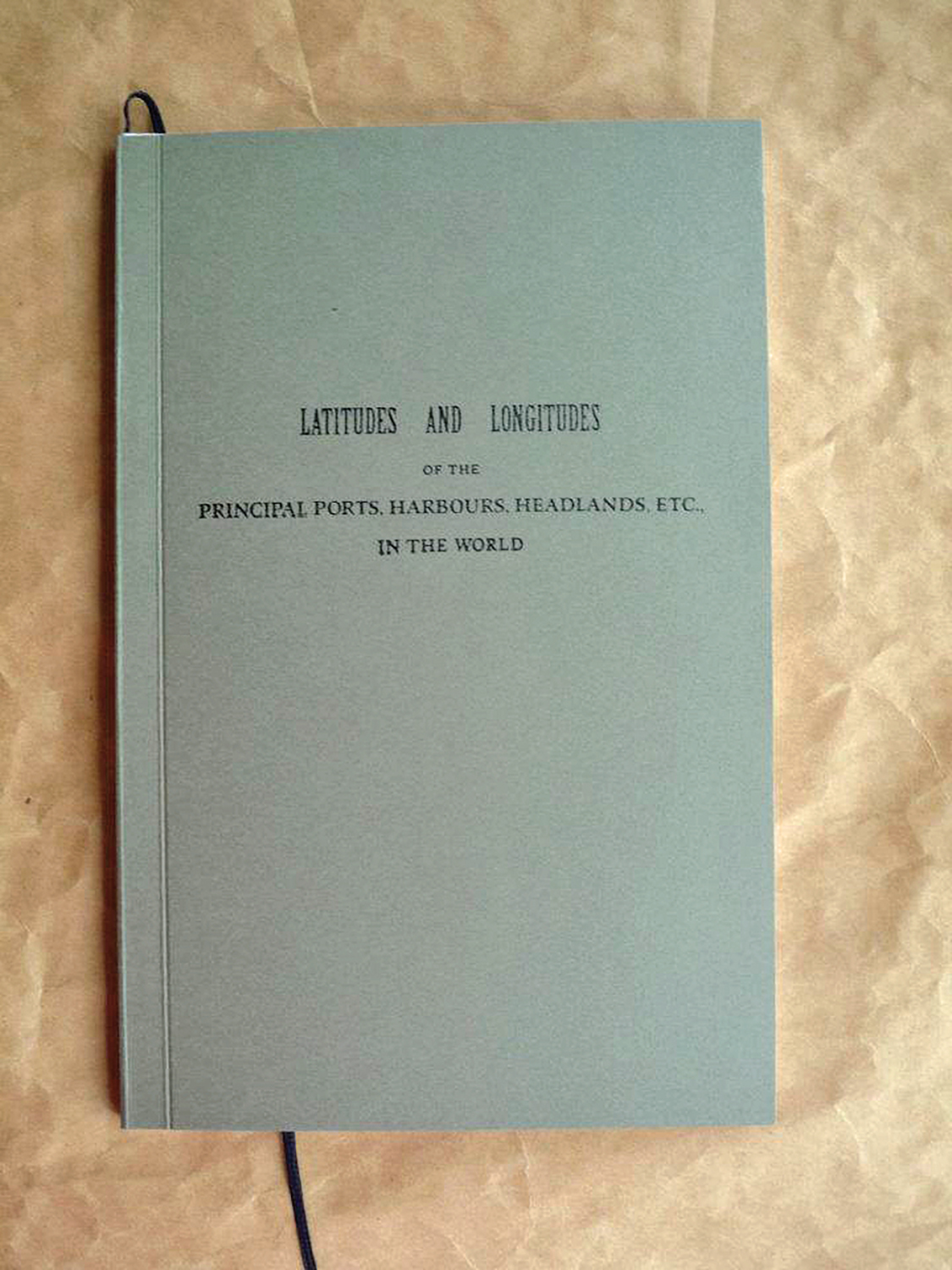
Latitudes and Longitudes
by Lyndl Hall
2012